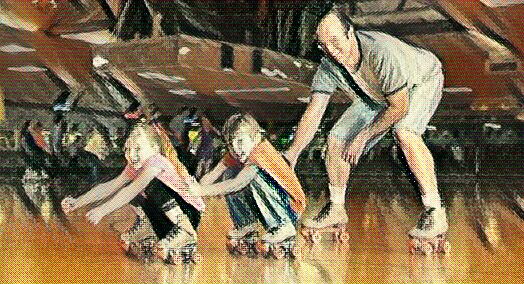What is indoor skating?
Indoor skating is a recreational or competitive activity performed on either ice or a hard surface inside an enclosed facility or rink.
It can be done using ice skates, traditional roller skates, or inline skates.
What are some of the health benefits of indoor skating?
Indoor skating offers numerous health benefits. It serves as a great form of aerobic exercise, providing significant cardiovascular benefits.
It also works a range of muscle groups, aiding in muscle strengthening and toning.
Additionally, as a weight-bearing activity, it can contribute to bone health.
Depending on the intensity, it can also aid in calorie burn and weight management.
What are the different types of indoor skating?
There are several types of indoor skating, primarily differentiated by the type of skates used and the style of skating.
In ice skating, there are disciplines like figure skating, speed skating, and synchronized skating.
In roller skating, you'll find styles such as artistic skating, jam skating, speed skating, and roller derby.
What should beginners consider when starting indoor skating?
Beginners should first ensure they have the proper equipment, including skates that fit well and protective gear such as helmets, knee pads, and wrist guards.
It's also beneficial to start with lessons or beginner programs to learn the basic techniques and safety precautions.
Taking it slow, practicing regularly, and gradually building up skills and confidence is the key to success in indoor skating.
Can indoor skating be a family activity?
Absolutely! Indoor skating is a fantastic activity for families.
Many rinks offer family-friendly sessions and provide lessons for all ages.
It's a fun way for families to spend time together while staying active.
In addition, participating in a shared activity like skating can promote teamwork and strengthen bonds among family members.
How should one choose the right indoor skating rink?
Choosing the right indoor skating rink depends on various factors such as the type of skating (ice or roller), location, facilities provided, cleanliness, crowd size, and safety measures in place.
Some rinks also offer additional amenities like rental services, lessons, and events, which might be worth considering.
What types of skates are suitable for beginners in indoor skating?
For beginners, comfort and stability are crucial. In ice skating, beginners should look for skates with sturdy, comfortable boots and adequate ankle support.
For roller skating, beginners might prefer traditional quad skates (four wheels, two side-by-side) because they offer better stability compared to inline skates (wheels in a single line).
Are there any specific rules one should be aware of while indoor skating?
Yes, each rink often has its own set of rules to ensure the safety and enjoyment of all skaters.
Common rules include maintaining a certain direction while skating, not carrying children while on skates, not skating recklessly, and respecting other skaters' space.
It's important to familiarize oneself with these rules before getting on the rink.
How can indoor skating contribute to mental health?
Indoor skating is not only a physical activity but also a mental one.
It can help reduce stress and anxiety, improve focus and concentration, boost mood, and promote overall mental wellbeing.
It also provides opportunities for social interaction, which can contribute to improved mood and a sense of community.
What equipment is necessary for indoor skating?
The essential equipment for indoor skating includes the appropriate skates for the type of skating (ice or roller), and protective gear like a helmet, knee pads, elbow pads, and wrist guards.
Depending on the type of skating, you might also need other items like gloves for ice skating or specific attire for competitive skating.







